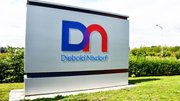News
Messaging standard to give multiple channels a common language
October 26, 2004
Channel integration remains largely out of reach for ATM owners. They can't easily offer common services across different delivery channels because ATMs, teller stations, voice response systems, point-of-sale terminals and other devices "speak" a different language when communicating with hosts for transaction authorization.
Some of these protocols have confusing names. "A teller station can't run 912," said Kevin Carroll, Concord EFS' director of ATM services. "A deposit message at the teller doesn't look like a deposit message at the ATM."
Not only that, but widespread modification of the proprietary NDC and 911/912 has "added a lot of pain" to the development process for new transactions, said Rick DuVall, a senior product manager at ACI Worldwide.
|
Standards facilitate adoption
Vendors - including NCR, Diebold, Fujitsu and Wincor Nixdorf - are working to give financial services a common language by advancing an XML-based messaging standard called the Interactive Financial eXchange (IFX).
These vendors and heavy-hitting financial institutions such as Bank of America, Citibank, Wells Fargo and Wachovia are members of the IFX Forum. The forum, formed in 1997, has five working groups, including one devoted to ATM and point-of-sale technologies.
The ATM/POS group began meeting in early 2002. Within a year it produced its first standard, 1.4. The standard supports the "big four" ATM transactions - cash withdrawals, transfers, deposits and account inquiries - as well as a number of more advanced functions such as cash recycling and dispensing of non-cash media.
Forum members reviewed and ratified the latest version of the IFX specification in February. Version 1.5 extends the ATM, POS, business and consumer banking support provided by earlier releases of IFX.
IFX will facilitate a move away from the traditional states-and-screens environment to client server architecture, a move long advocated by NCR, NCR's Risto said.
Most industry observers believe that widespread adoption of IFX may occur within five years or so, a pace that seems practically warp speed for the usually slow-moving financial services industry.
Market forces seem to be working in IFX's favor. While a Windows-based ATM operating system and updates of both switch and ATM software will be required, NCR's Risto said many deployers are already making those changes in conjunction with their Triple DES upgrades.
The move to IFX requires a smaller leap of technology than the switch from an OS/2 to Windows operating system, Risto said. "Once you've made the move to Windows, IFX is going to be a far smoother and more intuitive move."
















